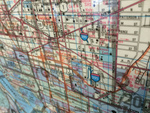Home to 140 or so farmers and fishmongers and hundreds of small specialty shops, Pike Place Market is Seattle's number one tourist destination. Add in more than 150 crafts vendors and artists and buskers who serenade the milling crowds and you have one seriously bustling marketplace. When the shuffling shoppers and sensory overload become too much, you can duck into one of the dozens of restaurants, including some of the city's best, and take a tasty time out. In 2017 the market added 30,000 feet of new space, which encompassed a new Producers Hall (shops and restaurants; Top Chef contestant Zoi Antonitsas opened the restaurant Little Fish in the new space) and an expanded open-air plaza for stands in the warm weather months, with jaw-dropping views, on clear days, of Mount Rainier.
Pike Place Market, originally a farmers market, was founded in 1907 when housewives complained that middlemen were raising the price of produce. The market allowed shoppers to buy directly from producers and save on grocery bills. For several decades, the market thrived. However, World War II deprived the market of nearly half its farmers when Japanese-Americans were moved to internment camps. With the postwar flight to the suburbs, the market was never able to recover from the war years, and by the 1960s, it was no longer the popular spot it had been. When it was announced that the site was being eyed for a major redevelopment project, however, a grass-roots movement arose to save the 9-acre market, and eventually, it was declared a National Historic District.
Market highlights include Rachel, a giant bronze piggy bank directly below the main neon market sign, and the adjacent Pike Place Fish, a fishmonger known for its "flying fish." The market's "Gum Wall," in the alley down a flight of stairs from Rachel, is a bit of a sticky subject. No one can agree whether it is art or just a disgusting form of litter. You'll have to decide for yourself.
The market extends along Western Avenue, the street in front, where you’ll find still more specialty and ethnic food shops, and if you follow the staircases behind the market (called the Hillclimb), you can get down to the waterfront.





 About our rating system
About our rating system


